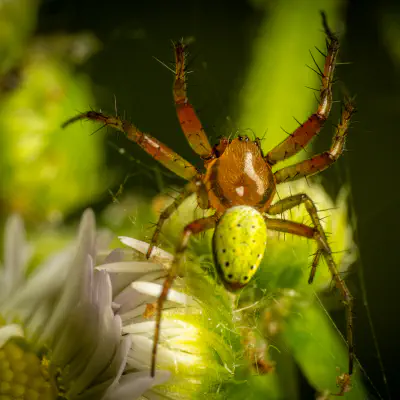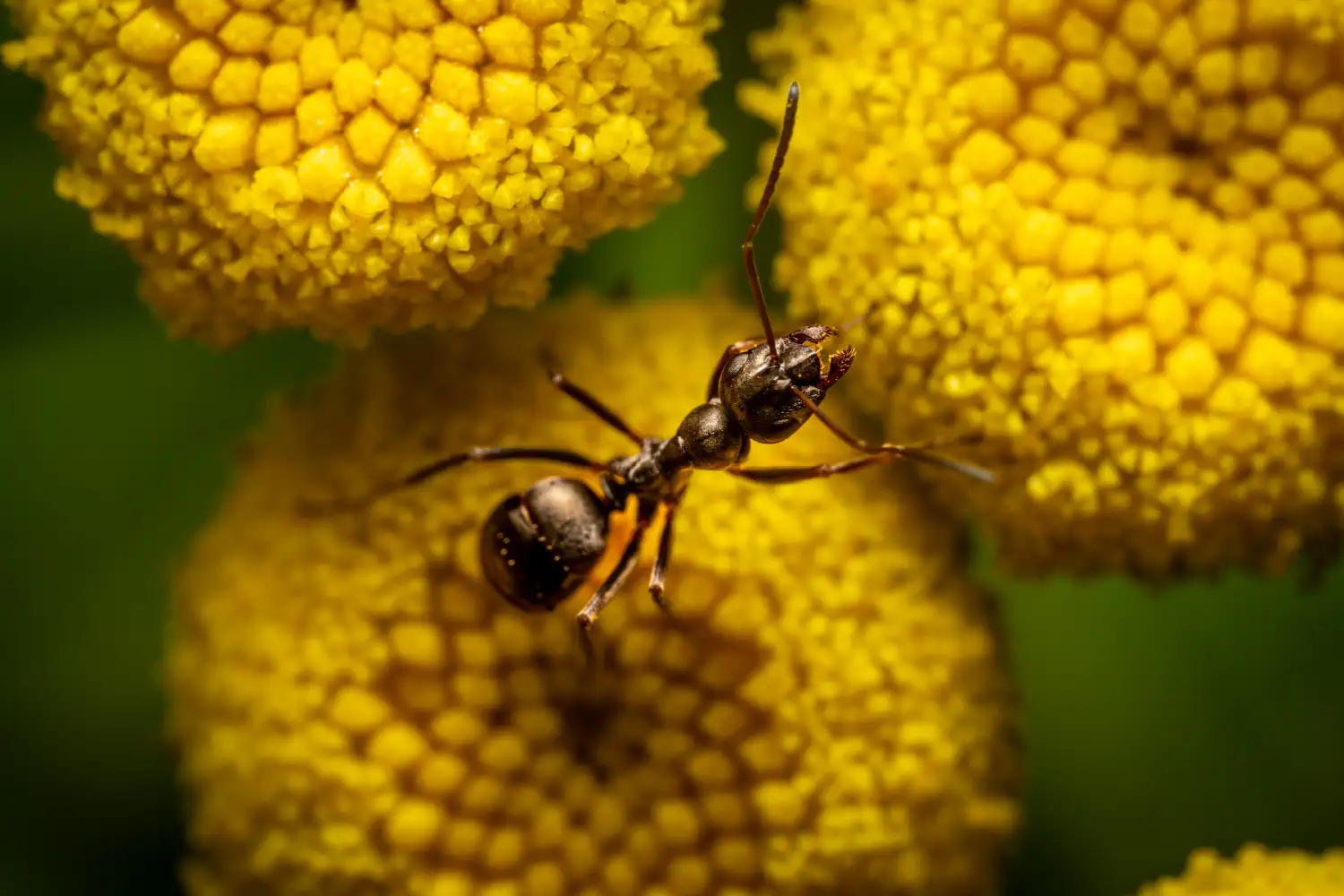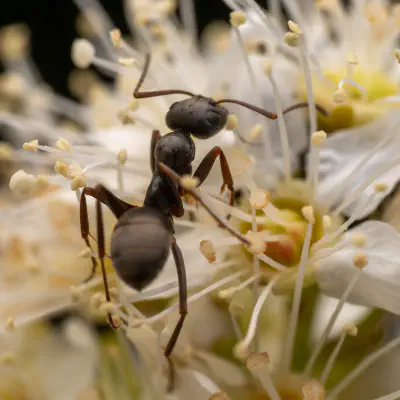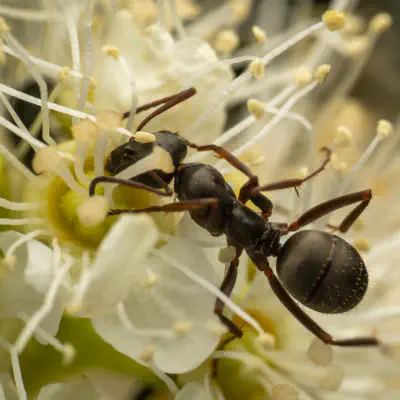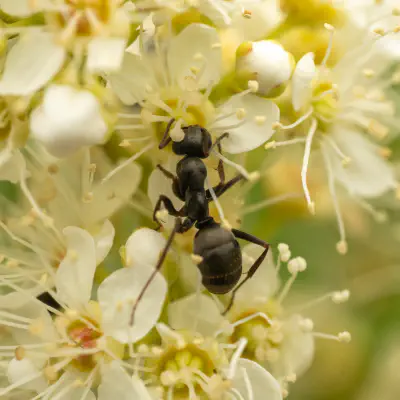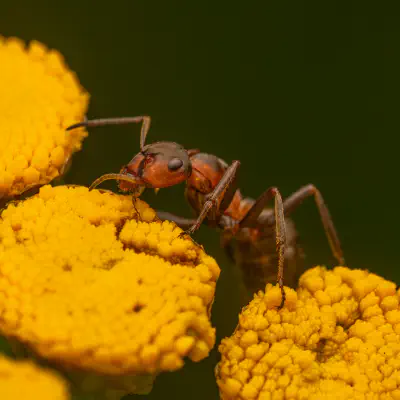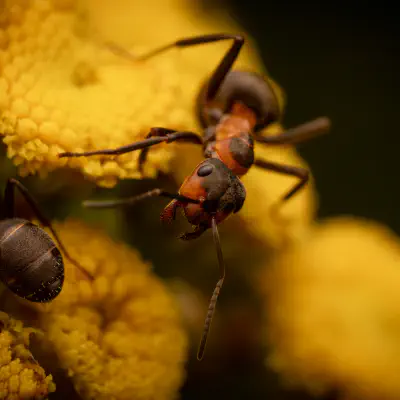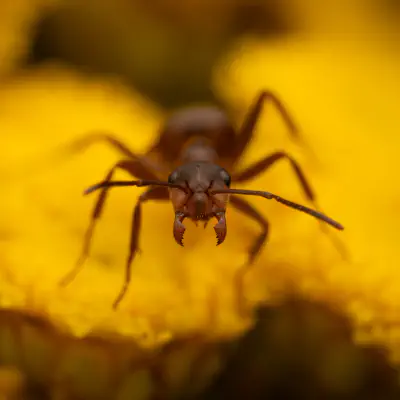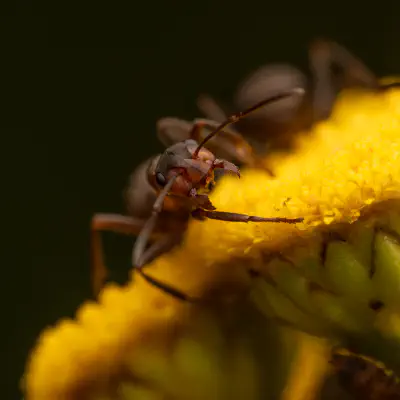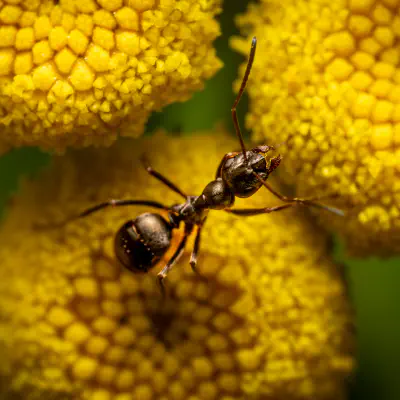Arthropods Daily – Issue No. 62 No. 62 |
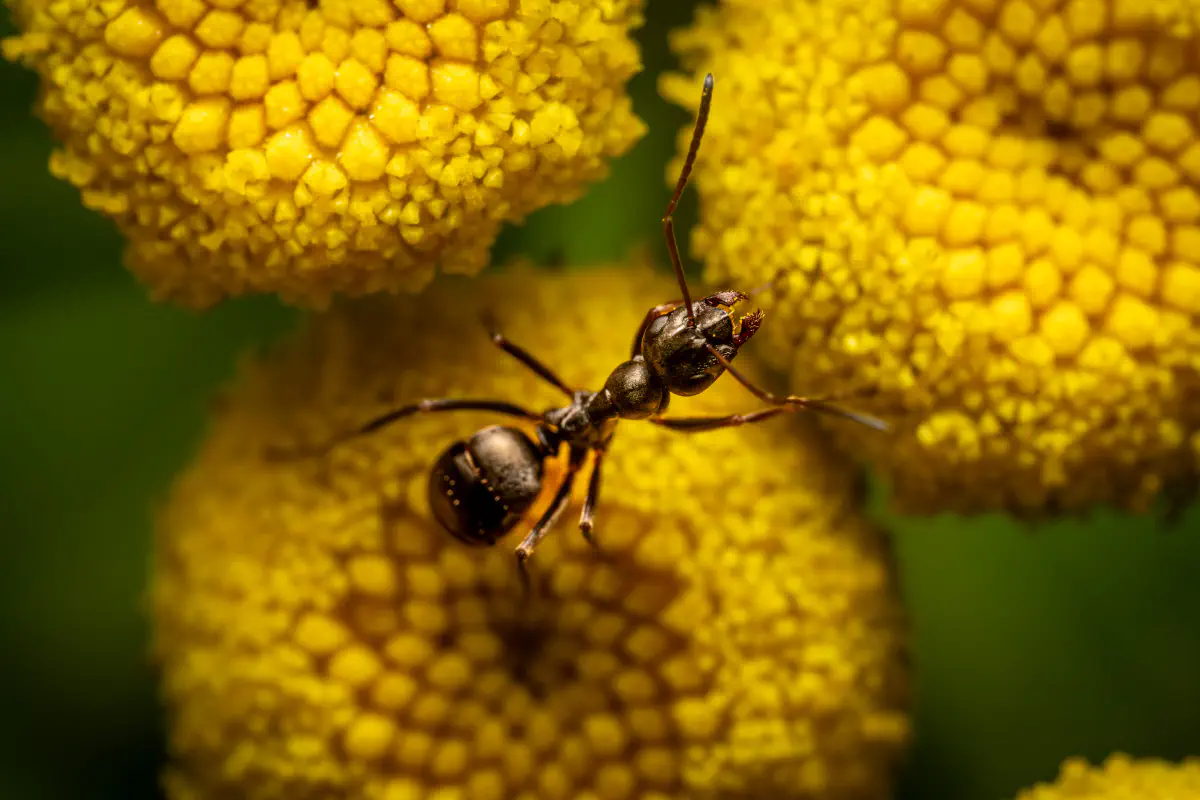
Ancestry Graph
%%{
init: {
'theme': 'base',
'themeVariables': {
'primaryColor': '#83a09c',
'primaryTextColor': '#212d2b',
'primaryBorderColor': '#fff',
'lineColor': '#fff',
'secondaryColor': '#006100',
'tertiaryColor': '#fff'
}
}
}%%
flowchart LR
classDef active fill:#fff
arthropods("phylum: Arthropods"):::active
arthropods-->insects("class: Insects"):::active
insects-->narrow-waisted-wasps-ants-and-bees("suborder: Narrow-waisted Wasps, Ants, and Bees"):::active
narrow-waisted-wasps-ants-and-bees-->ants("family: Ants"):::active
ants-.->black-garden-ant(["species: Black Garden Ant"])
ants-.->brown-tree-ant(["species: Brown Tree Ant"])
ants-.->myrmicine-ants("subfamily: Myrmicine Ants")
ants-.->odorous-ants("subfamily: Odorous Ants")
ants==>wood-mound-and-field-ants("genus: Wood, Mound, and Field Ants"):::active
click black-garden-ant href "/en/catalogue/arthropods/insects/narrow-waisted-wasps-ants-and-bees/ants/black-garden-ant/"
click brown-tree-ant href "/en/catalogue/arthropods/insects/narrow-waisted-wasps-ants-and-bees/ants/brown-tree-ant/"
click myrmicine-ants href "/en/catalogue/arthropods/insects/narrow-waisted-wasps-ants-and-bees/ants/myrmicine-ants/"
click odorous-ants href "/en/catalogue/arthropods/insects/narrow-waisted-wasps-ants-and-bees/ants/odorous-ants/"
click wood-mound-and-field-ants href "/en/catalogue/arthropods/insects/narrow-waisted-wasps-ants-and-bees/ants/wood-mound-and-field-ants/"
click arthropods href "/en/catalogue/arthropods/"
click insects href "/en/catalogue/arthropods/insects/"
click narrow-waisted-wasps-ants-and-bees href "/en/catalogue/arthropods/insects/narrow-waisted-wasps-ants-and-bees/"
click ants href "/en/catalogue/arthropods/insects/narrow-waisted-wasps-ants-and-bees/ants/"
This is not intended to be a dry lexicon. Personal stories and sensitive articles form the framework for our pictures: „The spider’s vacation in an apartment“
Elio was looking for a quiet escape from the wild – but ended up caught in the middle of a whole new adventure.
